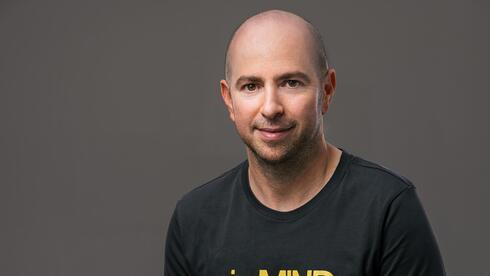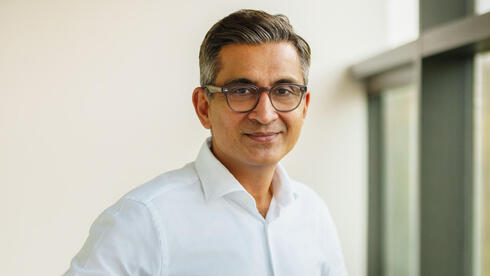
Interview
“The climate crisis will cause a surge of migration. You can’t stop hungry people”
As Chairman of the Israel Water Authority in 2006, Prof. Uri Shani initiated the establishment of desalination plants that saved Israel’s water economy, but “that’s not a workable solution for large countries.” He looks from the side at Europe’s drought and asserts: “To solve the global water crisis, you have to start with irrigation – that’s where the big waste of water happens”
Prof. Uri Shani, former Chairman of the Israel Water Authority and Chairman of the drip irrigation company N-Drip, in Europe rivers are drying up, while severe drought is ravaging the United States, India and China. In Brazil, extreme heat waves are destroying crops and creating a food shortage. Where does Israel stand amid all these catastrophes?
“Israel is amazing in the realm of water, it’s the world champion. It desalinates most of its water, it’s extraordinarily efficient and it’s the only country in the world that recycles all its wastewater and sends it on for agricultural use. In London, up until five years ago, water loss stood at 40%; in other words, water that flowed through the pipes and leaked into the groundwater, never reaching the residents. In Israel, water loss is low, only 7%-8%, and that’s phenomenal. In everything related to the water economy, to a large extent, Israel is no longer dependent on the whims of the weather – and lots of countries can be jealous of that.”
This is not something to be taken for granted. The memorable campaign “Israel is drying out,” starring Renana Raz, was launched while you were chairman of the Water Authority, between 2006 and 2011. We were in a different place back then: methodical desalination was still a distant dream; the water carrier infrastructure was old and suffered from a high level of water loss; and the national mood was in tune with the water level of the Kinneret, which only kept dropping.
“True. It emerged that we were running an annual water deficit of 350 million m3 (cubic meters), which increased from the beginning of the 1990s. All through the years, we had this fixed idea that nature put at our disposal about 1.5 billion m3 of water each year, which we managed to catch. In practice, the average was 1.15 billion m3, while at the same time, the population was growing and so was the demand for water. The situation of the Kinneret was extremely bad. After the water level dropped below the red line, I set a black line – minus 214.87 meters.”
What is the meaning of a situation like that?
“That the lake is about to die in one fell swoop, that it will become lifeless. Its vegetation dies, the fish die. We had all sorts of worrisome models on hand, and we were getting there in giant steps. All sorts of toxic plant life started to appear, like blue-green algae (cyanobacteria) that can develop a high enough level of toxicity to kill any animal that comes near it.”
And during those days, you were the Chairman of the Water Authority, the man with his hand on the main valve. All that dryness came rolling to your doorstep and the Finance Ministry was not thrilled, to say the least, about the idea of establishing desalination plants.
“I joined the Water Authority in December 2006, and a few weeks before that, the government had decided there would be no water desalination in Israel. I sought to promote the topic anyway, and Shimon Tal, who was my predecessor as Water Commissioner (the Water Authority was called the Water Commission at that time – Y.A.) wrote to warn me that I was making the mistake of my life. He simply expressed what everyone was saying. I was appointed to the position by the late Binyamin (Fuad) Ben-Eliezer, who was Minister of National Infrastructure at the time and understood this pressing need. So we passed a decision to raise water prices sharply, allowing the water economy to manage itself as a closed system and to dedicate the incoming revenue to the construction of desalination plants.”
The Israeli public didn’t like that move. People felt it very strongly in their pockets.
“I know, the public pretty much hated me because of it. But we stabilized the water economy through the water savings that resulted from the drought tax, which shook up everyone, and through raising the price of water in a way that reflected its real cost. We raised the customers’ marginal rate steeply and increased the price for agricultural use by 50%, because otherwise we would have found it a truly difficult situation to supply water to the cities. All these steps instantly lowered water consumption by 20%, alongside the establishment of the desalination facilities.”
Agricultural yields are diminishing in many parts of the world due to extreme climate change. Is the world interested in the “Israeli model?”
“Many countries are interested in the ‘Israeli model,’ but they can’t do much with it. Desalination is not a solution that works for large countries; it’s only for big cities located next to the sea. It’s impossible to carry desalinated water for agricultural crops to a country’s interior that’s 100 or 1,000 kilometers from the shoreline because the costs are impossibly high. Moreover, desalination itself is very expensive due to the high cost of energy.
“Israel is different from most other countries due to its size – it’s like one large city sitting on the seashore. For example, bringing desalinated water to Jerusalem is not a complicated story, because at the end of the day, we’re talking about a distance of a few dozen kilometers to the east.
“A short while ago, some people from Colorado came to me and wanted to learn about desalination because of the state’s terrible drought situation. But it’s expensive, it wouldn’t be worthwhile and the entire process would take about a decade, at a time when the state needs a solution right now.”
So they should start to save water by raising prices and operating a closed water economy.
“The Israeli model has two components that the world cannot accept. The water in Israel belongs to the public, and the state manages it on their behalf. In the U.S., anyone who owns land also owns the water underneath it and fighting about the sanctity of property rights is very difficult there. In Arizona or Colorado, farmers get priority over the residents of Phoenix when it comes to water supply, and if the farmers decide to give up their water, they get a huge amount of compensation. It’s scandalous, because water is a national resource.
“In Israel we did something else that’s impossible to do in the rest of the world, that is, we raised the price of water. When water has no price, you can’t raise its price; and when it doesn’t cost you money, you waste it. Leaders are deterred from raising water prices because it affects the price of basic foods, and the fear of ensuing social protests creates a dilemma. The only tool leaders can use in order to manage their water economy in a reasonable way – is not available to them.”
The climate crisis is becoming extreme. What’s happening to planet Earth?
“The world is changing and humanity is already feeling it. Most human beings live in a sort of bubble, but things are always happening. The war in Syria erupted because of water and led to the stream of refugees into Europe, and we’re talking about only 3 million people. So, people who have nothing feel climate change immediately, while people who are better off will feel these changes through much more massive waves of migration – and that’s where we’re headed. Look at the tremendous drought in Mexico. There won’t be a river of refugees flowing to the United States? Even without the drought, they migrate to America. It’s impossible to stop hungry people.”
And what’s awful and distressing is that we haven’t seen anything yet.
“The map of global warming is crazy. Food prices will hit the sky, there will be more wars, hunger, waves of migration. And that’s going on right now – look at Europe. People thought that warming by 2 degrees Celsius is actually ‘no big deal.’ A rise of only 1.5 degrees more means a 23% reduction in the water available to humankind, and yes, the worst is yet to come. There’s no doubt about it. We’re paying compound interest and it’s going up all the time.”
In recent years, you’ve seen that these changes are coming our way, so you established N-Drip, which seeks to change the way farmers around the world irrigate their fields in an era when water has become a scarce resource. What’s wrong with today’s irrigation methods?
“About 70% of the world’s water used by humans goes for irrigation. Out of this 70%, less than 30% is used efficiently and all the rest we simply throw away. If you want to deal with the worldwide water crisis, start with irrigation because that’s where the largest waste is occurring.”
Fifty years after we landed on the moon and with our efforts now turned toward Mars, the world is still irrigating its fields using ancient and primitive flooding methods.
“It’s a 5,000-year-old irrigation method. Flood irrigation is used on 85% of the world’s irrigated land. You see it in California, Texas, Australia, Spain – and not just in Third World countries, not just in the Far East. And that’s because water has no price and if there’s no price, it gets wasted.”
How does N-Drip change this?
“It facilitates greater efficiency and water conservation through the use of drippers and the precise irrigation of crops. Look, the entire extent of drip irrigation worldwide (with all due respect to Israeli pride about inventing it) represents just 3.5%-4% of all areas under irrigation. If you remove the farmers who drip irrigate due to the subsidies they receive, you get less than 2%. Drip irrigation is expensive for agriculture. Our invention eliminates the need for energy to power drippers. Today most fields get their water from wells or nearby rivers; the water fills up a canal at the head of the field, flows outward and gets distributed. In our system, we funnel the water in the canal into drippers and irrigate the crops precisely, using only the force of gravity.”
In what way does this method differ from that of Netafim, Rivulis and NaanDanJain Irrigation?
“The familiar standard drippers operate at 10 BAR water pressure and require the use of clean water whose filters also need water pressure to operate. We do all this using only 5% of the pressure needed by the other systems, and the water doesn’t have to be filtered. The irrigation is done with a head elevation of only 50 centimeters, with no need for energy to power pumps or filters, and without requiring a whole expensive setup to support it. Our system enables cheap, precise irrigation of entire fields. We eliminated the need for filtering because our drippers don’t get clogged. If a particle does get into the system, the water bypasses it and continues to flow through the entire length of the dripper.”
The most water-wasting crop in the world is rice. Does your system work for rice, too?
“Yes, we manage to save about two-thirds of the water used to grow rice and still achieve the same crop yield, or even more.”
Prof. Uri Shani, age 72
Lives in Tel Aviv
Professor of soil and water sciences at the Hebrew University of Jerusalem
Currently chairman of the drip irrigation company N-Drip, formerly chairman of the Israel Water Authority and vice president at agrochemicals company ADAMA
Served on the late Yoni Netanyahu’s team in the Israel Defense Forces’ elite commando unit Sayeret Matkal
First published: 11:36, 28.08.22














